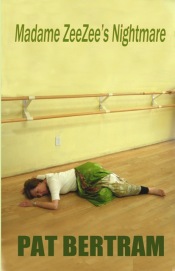 When I write fiction, whether a short story or a novel, I always need to know who the main characters are, what they want, who is trying to keep them from getting what they want, and if they are successful in their quest. In fact, the ending is so important to me, that I often write the ending somewhere in the middle of the project. By then, the characters have been developed, most of the story has been laid out, and I can see how the pieces fit and know exactly where I am going. (I just thought of something — my unfinished novel has been paused for several years now. Only part of that is a loss of focus due to the changes in my circumstance. The rest comes from a lack of inclination to continue. It is the first novel I worked on that I did not write the ending in middle. I wonder doing so would get me back on track?)
When I write fiction, whether a short story or a novel, I always need to know who the main characters are, what they want, who is trying to keep them from getting what they want, and if they are successful in their quest. In fact, the ending is so important to me, that I often write the ending somewhere in the middle of the project. By then, the characters have been developed, most of the story has been laid out, and I can see how the pieces fit and know exactly where I am going. (I just thought of something — my unfinished novel has been paused for several years now. Only part of that is a loss of focus due to the changes in my circumstance. The rest comes from a lack of inclination to continue. It is the first novel I worked on that I did not write the ending in middle. I wonder doing so would get me back on track?)
The one project I am involved with that turns this need to know the ending on its head, is the Rubicon Ranch serial I am writing with other Second Wind authors. In the first book, we postulated a murder, then each of us created a character who might have reason to want to kill the little girl. That is all we had of the story when we began to write it. We knew, of course, that the killer would be found, but we didn’t know who did it, why it was done, or how the story would be resolved. We simply took turns writing our chapters in round robin fashion, and hoped readers would forgive us if all those different POVs made the story seem disjointed at times. (Normally, when you write a novel, you get to go back and fix any problems during rewrites, but when you write a novel online, you are stuck with what you wrote.)
My character Melanie Gray is a grieving woman. We started the project just a few months after the death of my life mate/soul mate, and I couldn’t conceive of any other sort of character — at the time, grief was all I knew. To make her a widow, I had to get rid of her husband, so I killed him in an accident before the story began. That was the sole point of the accident, yet in a later chapter, the sheriff seemed to insinuate that there could be a connection between Melanie’s husband and the little girl — perhaps they had both seen something and been killed to protect it.
Well, it turned out that the two deaths were unrelated, but later the sheriff (as written by Lazarus Barnhill) told Melanie he concluded that the accident had been deliberate.
Now, during the second book, even more information about Alexander is being revealed — he had, in fact, been murdered, and the car tampered with in such a way that it had to have been done by a skilled professional.
I find that development interesting since when I created the character of the dead husband, he had a single role — to make Melanie a widow — but because of the flow of the story, the husband is developing into a character in his own right, and a nefarious one at that.
Melanie, too, is developing in response to the needs of the story, or at least to the needs of her backstory. She and her husband were the authors of a successful series of coffee table books. They’d traveled the world, he taking photos, she writing the text, so obviously she isn’t the weakling her grief makes her seem. One of the ironies of her life is that while living in places where human rights weren’t respected, she never had a problem, yet now, in the safest place she’d lived in her adult life, she is steeped in death and in trouble with the authorities. (If you’ve read any of my books, you will know that I like ironies.)
It’s a refreshing change of pace being involved in the Rubicon Ranch project. All I need to do is write my chapter when it is my turn; make sure it is consistent with what I know of the character, her background, and what has already been written; and not worry about what is coming next — just go with the flow.
***
Pat Bertram is the author of the suspense novels Light Bringer, More Deaths Than One, A Spark of Heavenly Fire, and Daughter Am I. Bertram is also the author of Grief: The Great Yearning, “an exquisite book, wrenching to read, and at the same time full of profound truths.” Connect with Pat on Google+









December 19, 2012 at 2:42 pm
When it comes to my stories, I have an ending in mind, but I wait till I’m actually there before I write it down. Even when I outline a story, what’s in the outline may not necessarily reflect what will be in the story. In fact, the ending I came up with for my serial killer novel when I wrote the ending was way different from what the outline had listed. I don’t know if I could do the ending in the middle, but I admire you for being able to do it.
December 20, 2012 at 11:01 pm
It sounds like a fascinating way to write a story–rather fun, but also challenging. So far it reads well, too… what I’ve read. I admit I haven’t read all the chapters. I don’t have staying power… no patience… when waiting for the next part of a serialized story.
December 21, 2012 at 10:56 am
I find the process fascinating. It’s amazing that there is any cohesiveness to the story, but luckily, we have such talented writers contributing to the project.